

Get monthly notifications
How to Solve Privacy for Marketers & eCommerce?
The privacy-first approach is now the eligibility for a business to sustain itself in the current cutthroat competition. It is believably impractical to process a transaction without publicizing your personal information!
So, let us look for a solution and learn how to solve privacy for marketers & eCommerce in this blog.
Table of Contents:
- Privacy & Google Analytics 4
- Collection of Data
- How to Leverage Data
1. Privacy
Bursting some myths about third-party cookies and third-party data is a must.
Privacy is a concept that encircles GDPR, Schrems II, e-privacy, and all the new technologies that spring from different browsers and iOS updates. Hence looking at the concept of Privacy as a whole is necessary, specifically from the perspective of it being legal as well as technical.
For example:
GENER8
.jpg?width=690&height=385&name=v24%20(2).jpg)
Have you heard of Gener8? Simply a web browser and an extension. The company stands on the concept of a privacy-first approach. It gives you the authority to restrict your personal data online and wishfully earn from it as well! Check out this link where the founder of Gener8, Sam Jones has brilliantly pitched his business.
- To innovate within the restrictions of Privacy like Gener8 is an infallible way to boom your business in the present times. Big businesses like Meta, and Apple have already followed suit and aced their game in Privacy. When are you stepping on the bandwagon?
- Talking about Privacy, Google Analytics 4 is already in the limelight whilst Universal Analytics will be sidelined from the 1st of July 2023. Thereafter, to collect any kind of data and perform any year-over-year comparison having Google Analytics 4 set up would be a must.
- Google Analytics 4 was built considering the new privacy laws and constant technology updates. Unlike Universal Analytics, this latest version of Google Analytics traces the app traffic individually or along with the website traffic. Both versions are different in terms of the way data is collected, traced, and demonstrated.

How should businesses respond to the privacy-first approach?
- Firstly, it is suggested to have a framework ready for how to collect data. For example, keeping a check on the transparency of their consent banner is a must. Updating the consent banner when a new technology or a new marketing platform is introduced is equally important.
- Secondly, you must monitor how the collected data is measured and then used to activate users/ customers.
What’s next?
Before going in and setting up Google Analytics 4, make sure you are privacy ready. In simple words, it is checking your business’s potential to manage data strictly following all the privacy norms while bettering business relations.
Understand where your business stands, and how it is with the consent banner. So, how to assess your Privacy Readiness? We’ve got you covered!
Keywordio has a set of 44 questions that assess your privacy readiness near perfect. We have 3 service packages to choose from:
- Self-Service: 24,500 SEK
You have to take the full assessment all by yourself. It will then be reviewed by our team. - Self-Service + Workshop: 45,600 SEK
Post assessment, a workshop will be arranged to discuss further needful actions or have a discussion with the legal team/ data compliance team as per requirement. - Full Assessment + Implementation Plan: 120,200 SEK
A full audit of the assessment will be performed and along with the legal team, we make sure that the setup is customized and configurated according to your basic needs.
Google Analytics 4

Setting up Google Analytics 4 will enable you to collect different insights and data points from your app and web. Post collection, you can feed the data into Google Analytics 4 with other data sources, and evaluate; analyze using the interface. Moreover, you can now export heaps of data.
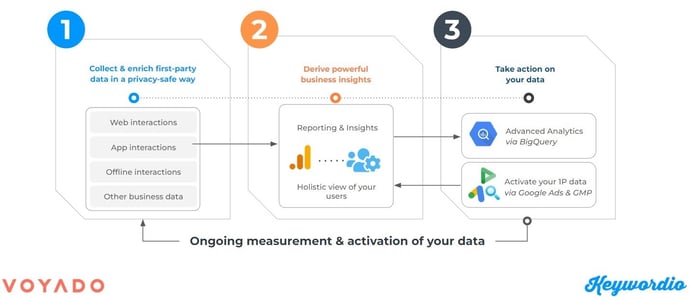
Google Analytics 4 enables you to answer strategic questions in innovative ways and drive impact.
- We have some salient features of Google Analytics 4 curated for you:
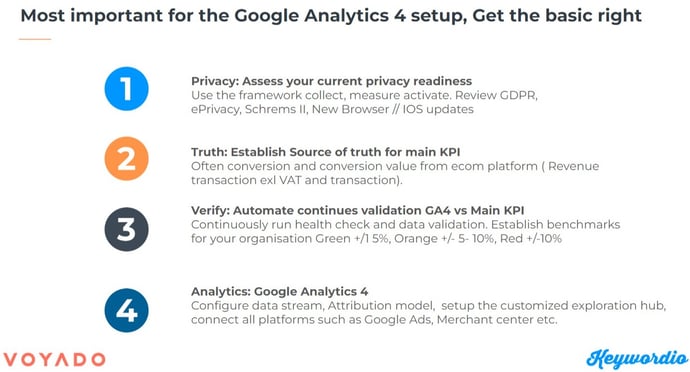
Before you set up Google Analytics 4, ensure you are privacy ready and then go on to establish the source of truth for your most vital metrics. The next important step is to verify your data constantly, keeping a constant check helps keep your data healthy and reliable. Lastly, configure the data streams.
Let us consider the following example:
If you follow the abovementioned 4 steps without setting up Google Analytics 4 and try to match the data, the outcome in Universal Analytics might give you errors. Why? Because the attribution model of Google Analytics 4 is completely different from Universal Analytics.
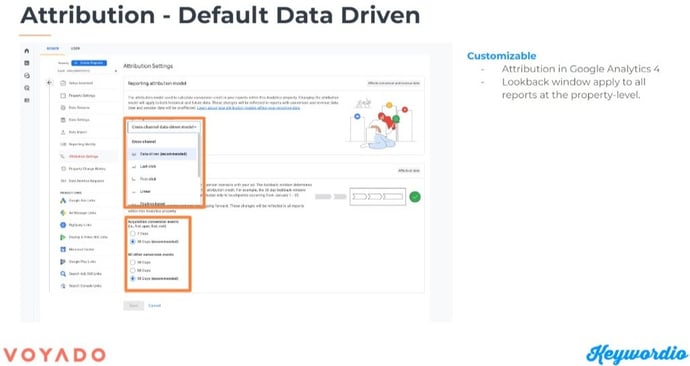
Google Analytics 4 has an addition of a new option as the Default attribution model. You can also choose your lookback window to adjust it according to your business needs.
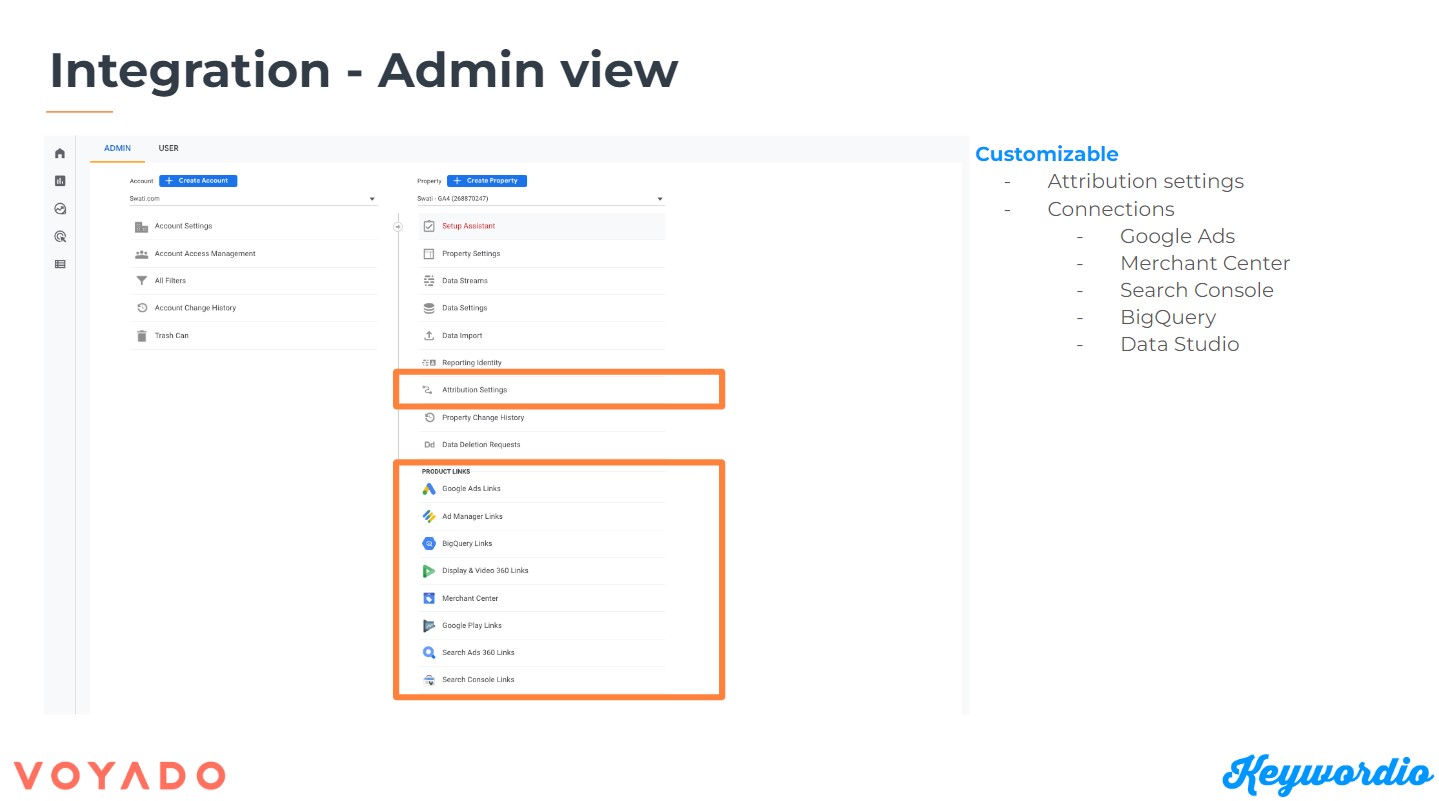
Always ensure that you have all the key connections to feed them with maximum data.
2. Collection of Data
Collection of data on different platforms. 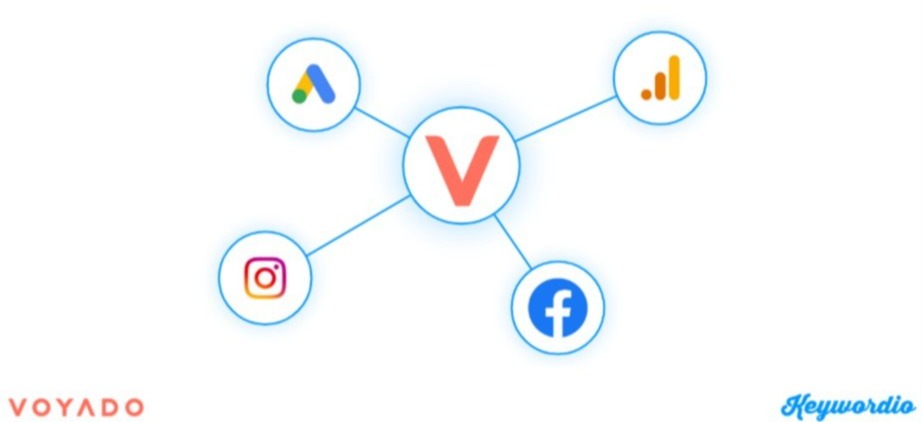
Sync all platforms into one audience
To have all the platforms synced in one place you must know different ways to collect all the first-party data. For stronger connections among various platforms, software like Voyado helps you sync all your data at the time of advertising.
Ideal Sales Funnel

Consider converting a stranger visiting your website into a promoter who then starts caring for your business! To begin with, in the initial phase when you want to attract new people to your business, you must run a lot of brand awareness ads on platforms like Facebook, Instagram, or TikTok. These will help keep your costs down.

Once new customers visit your website and interact with your brand after watching your ads, you can connect to other platforms like Pinterest and Google to expand your reach.
Now, when items are being added to the cart but not bought, retargeting ads based on the customers’ behavior help.
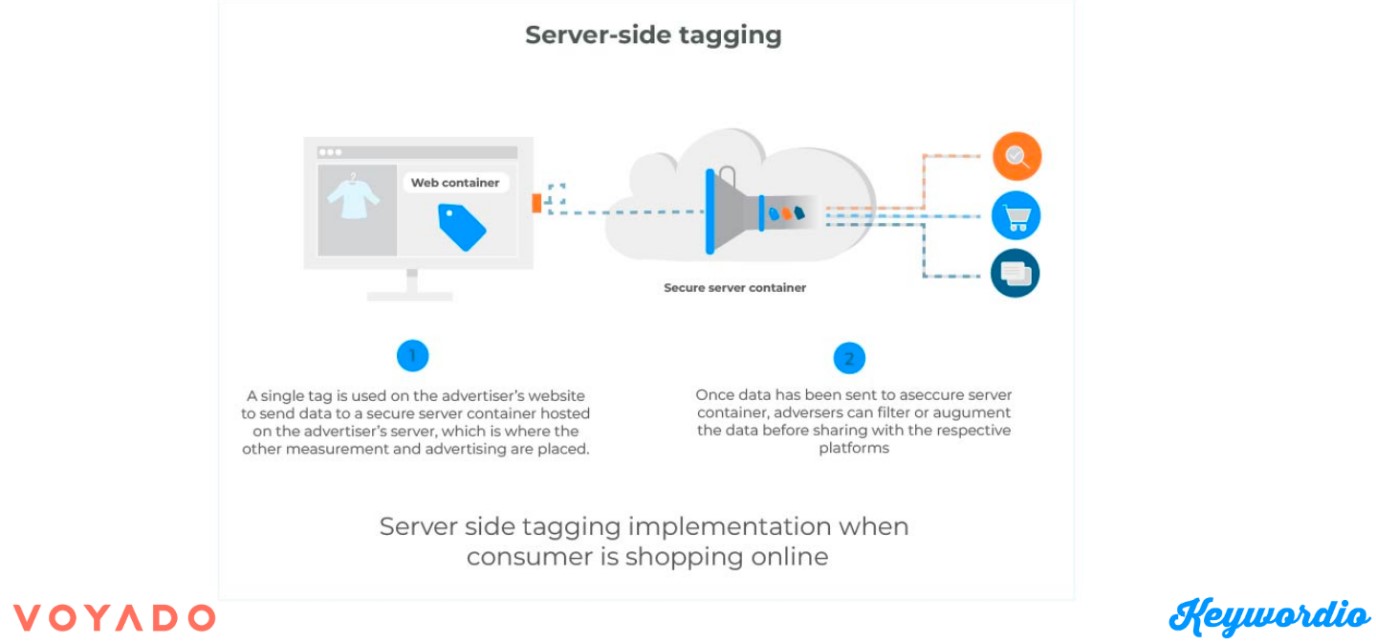
Noting privacy updates, tag managers, etc. from Google is crucial as they all are interdependent.
For example, server-side tagging on Google also used by Facebook pixel is important to create successful ads. So, installing server-side tagging on your Google server would be of great help while running the ads as it collects your desired data and you can choose which data is to be sent to Facebook or TikTok. This method is safer in terms of privacy, hence implementing server-side tagging is highly recommended as compared to client-side tagging.
Meta
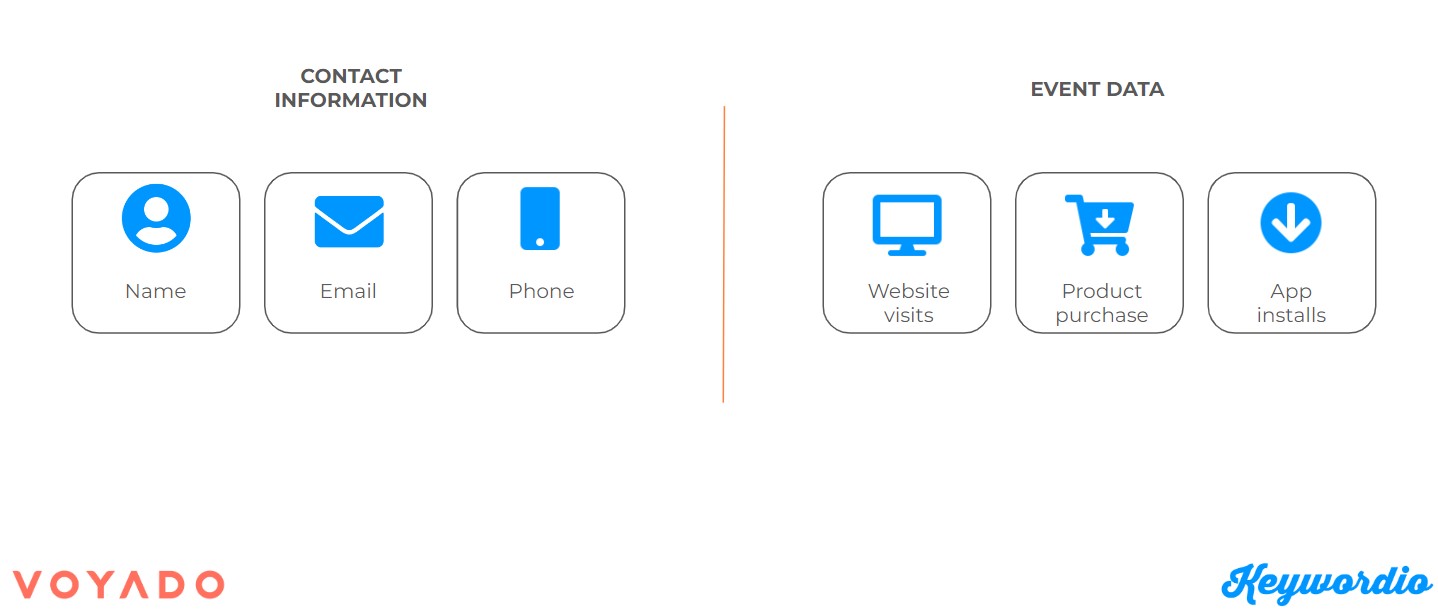
Here, the data collection method differs. Meta collects your name, email, and phone number as essentials to sign up for the platform. They also collect a lot of event data, including the type of websites visited, purchased products from any installed apps, and the kind of interests. However, you can choose to drop out of this feature.
There are more ways to strengthen connections like Conversion API. Previously, Facebook had Pixel but now it has conversion API and also Voyado as its third option. So, here Facebook has 3 chances to get their connections right and also gives in more and more data to the advertising platform. It also ensures the correctness of data in your report.
Thus, it is advised to implement a few conversion APIs. Here are some ways to implement them:
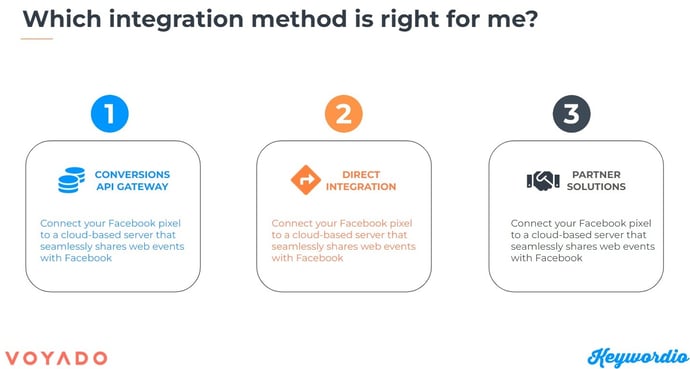
TikTok
What does TikTok store?
It collects customer age, gender, interest, location, language, telephone carrier, mobile networks like 4G or 5G, mobile device, and customer behavior.
You might think that interest and behavior may be the same! They are not. Here’s the difference:
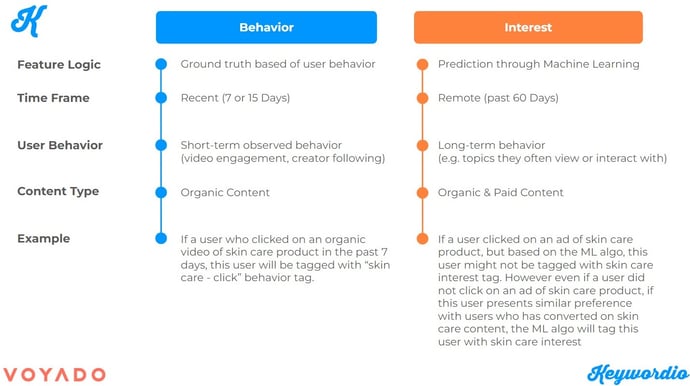
3. How to Leverage Data?
.jpg?width=690&height=227&name=Felix%20quote_V02%20(1).jpg)
To begin with, let us understand the different mechanisms mentioned below along with why first-party data is becoming more and more important.
.jpeg?width=690&height=265&name=GDPR%20ePrivacy%20(1).jpeg)
.jpg?width=4500&height=3242&name=Browser%20%26%20OS%20(1).jpg)
Looking at the current market scenario, privacy will soon have more legislation and regulations considering both the tech and legal aspects. As a business, you must be on your toes when it comes to Privacy. Let us now look at ePrivacy which regulates cookies and also has a directive.
The ePrivacy Directive looks after the electronic communication and use of cookies and trackers. The problem with this directive is the absence of implying hefty fines for disobeying the ePrivacy norms..jpg?width=748&height=539&name=ePrivacy%20(3).jpg)
The ePrivacy directive will now be upgraded to a regulation where we can suppose that non-compliance will charge the same fines as GDPR, which is a big move because if we tend to rely more on cookies and are fined similarly to GDPR we can presume that we need to change our way of working with it.
.jpg?width=690&height=497&name=ePrivacy%20Regulations%20(1).jpg)
Let us look at the changes in the market:
.jpeg?width=4500&height=2378&name=Changes%20in%20the%20market%20(1).jpeg)
After looking at the market changes, here are the 3 main challenges we need to focus on:
.jpeg?width=4500&height=2947&name=The%20challanges%20(2).jpeg)
Explicit Consent:
You require this for things like-
- Profiling & Personalization
- Cookies
- Data-sharing with ad platforms
- Communication
Unintentional Effects on CX:
When Apple started bringing down barriers for third-party cookies, tech companies began placing first-party data cookies properly. Apple then went ahead to tell us that some things will be affected even if were not meant to change.
Things like:
- Web Analytics
- Marketing Automation
- A/B Testing
- Personalization
- Single Sign-On
This happens when the window through which you can identify a customer shrinks.
Less Efficient Cookies:
Let us consider a study from Advanced Metrics on how many people accept cookie banners or just close them.
.jpg?width=4500&height=3242&name=Cookie%20efficiency%20(1).jpg)
Looking at the image above, we understand that people in Sweden and the Netherlands show a high acceptance rate while others show a fairly low rate. In some markets, the acceptance rate is estimated to go lower, and thus knowing how to get first-party data that is not cookie-based is important.
What is the solution to this?
Customer-First Data Strategy
.jpeg?width=4500&height=2351&name=Customer-first%20data%20(1).jpeg)
The first-party data strategy revolves around getting to the second and third-party data in a way where we can take ownership of the customer data and can utilize it to deliver a better user experience.
Pillars of Customer-First Strategy:
CDP-
.jpeg?width=4500&height=2633&name=CDP%20(3).jpeg)
A Customer Data Platform is a place to collect data together. It is advised to have a single source of truth for all the incoming data. Why? Because if all the data inputs and outputs have a different source, bringing them to life would be a task!
Consolidation-
.jpg?width=4500&height=3242&name=Process%20(1).jpg)
Consolidation of the tech stack comes back to a single source of truth. This means that if you have various systems interacting and utilizing data in different ways and if at some point you encounter an issue then it becomes difficult to get the data out or to get the delta of the data back.
Data Governance-
You need to establish a governing process that will handle issues right from GDPR to cookies because the issues are only going to rise.

3 Things You Should Do Immediately!
- Review your cookies and the consent process.
- Include profiling as a service in your customer club and make your membership more attractive.
- Make loyalty a key question in your organization and customer offering
3 Things to Consider
- Do you have a perfect proposal that would get your customers to share their data and who is responsible for all of this and the holistic customer experience?
- Are you up to date concerning your privacy landscape? Who is responsible for understanding and being proactive?
- Which KPIs are important for your company? Is it traffic & conversion or NPS (Net Promoter Score) or time to retain & lifecycle changes?
CONCLUSION
Clearly, data privacy has tapped the eCommerce world with a bang! If you are into marketing or an eCommerce business you ought to be hawk-eyed. The sooner you adapt to the privacy-first approach, the better for you.
So, do you feel burdened after realizing you need to know so much? We have a solution! Get in touch with our eCommerce experts and relieve yourself from the stress.
Keywordio offers a course on "How to Solve Privacy for Marketers & eCommerce?". The blog is inspired by this course, a perfect elaboration on the topic. Go and hear out from eminent experts in marketing!
Articles by Swarali Jambhale
The Next Big Thing: 5 Digital Marketing Trends to Watch for in 2023
Digital marketing is a constantly evolving field, shaped by emerging technologies, changing consumer behaviors, and the dynamic nature of the online landscape. Staying on top of the latest trends is crucial for businesses and marketers to effectively engage with their target audience and drive growth. In this introduction, we will explore some of the key digital marketing trends that have emerged in recent times.
A Sneak Peek into Pinterest's 2023 Product Updates!
Pinterest is improving its Ads Manager to provide a seamless experience for advertisers. New features will be released throughout 2023 to optimize advertising strategies. Pinterest aims to offer powerful tools and insights for better campaign results. Get a sneak peek into the exciting updates coming to Ads Manager this year.
Featured Articles
The Full Funnel Approach and Pinterest
Today, we're going to delve into the significance of working with a full-funnel strategy and understanding why a comprehensive media mix is crucial. We'll also explore an example of how this approach and including Pinterest in the media mix led to a significant decrease in the cost of sales for Houdini.
Master Text Overlays: Boost Ad Engagement
In recent years, capturing the attention of your target audience has become more challenging than ever. Businesses and marketers are constantly on the lookout for innovative ways to stand out in the crowded advertising landscape.
One effective technique to draw attention to your ad's message is through the use of text overlays on image and video ads. In this blog, we will explore the best practices for incorporating text overlays, ensuring your message is impactful without compromising the visual appeal of your ads.
Similar Articles
Protect Your Facebook Business Account from Phishing: Expert Tips by Keywordio
Hello everyone, Johan here from Keywordio. Today, I want to share crucial insights into phishing—what it is and how you can safeguard your Facebook business account from this prevalent threat.
Exploring the Future of TikTok: Insights from the 2024 Trend Report
Introduction
I'm excited to delve into TikTok's comprehensive "What's Next 2024 Trend Report." This report is a treasure trove for anyone in digital marketing, offering deep insights into the future of content, storytelling, and consumer engagement on TikTok.
E-Commerce Excellence: Meta's Advantage+ Shopping Campaigns Redefined
Welcome to the dynamic world of e-commerce, where Meta's Advantage+ shopping is reshaping how businesses connect with customers. In this blog post, we'll explore the key features of this innovative tool.
Introducing TikTok Shop
Today, I bring to your attention a revolutionary update from TikTok, a platform where over 150 million Americans seek daily doses of inspiration and entertainment. With a plethora of trends, fashion hacks, beauty nuggets, and a smattering of recipes, TikTok has emerged as a modern-day oracle for curious minds. The excitement in the air thickens as we unveil TikTok Shop to the US, an avant-garde conduit for folks to spot and snag their adored items seamlessly.
The Full Funnel Approach and Pinterest
Today, we're going to delve into the significance of working with a full-funnel strategy and understanding why a comprehensive media mix is crucial. We'll also explore an example of how this approach and including Pinterest in the media mix led to a significant decrease in the cost of sales for Houdini.
Master Text Overlays: Boost Ad Engagement
In recent years, capturing the attention of your target audience has become more challenging than ever. Businesses and marketers are constantly on the lookout for innovative ways to stand out in the crowded advertising landscape.
One effective technique to draw attention to your ad's message is through the use of text overlays on image and video ads. In this blog, we will explore the best practices for incorporating text overlays, ensuring your message is impactful without compromising the visual appeal of your ads.
The Next Big Thing: 5 Digital Marketing Trends to Watch for in 2023
Digital marketing is a constantly evolving field, shaped by emerging technologies, changing consumer behaviors, and the dynamic nature of the online landscape. Staying on top of the latest trends is crucial for businesses and marketers to effectively engage with their target audience and drive growth. In this introduction, we will explore some of the key digital marketing trends that have emerged in recent times.
The Power of Branding on Meta
Are you ready to unlock unparalleled opportunities and take your online business to new heights? In a rapidly evolving digital landscape, Meta continues to revolutionize the way marketers and entrepreneurs create an impact on buyers.
Today, we will talk about the immense potential of branding on Meta's platforms, Facebook and Instagram based on our Meta Branding (Online Course). Brace yourself for insights that will empower you to establish a strong brand identity, harness consumer trends, and optimize your advertising strategies like never before! Ready to spearhead your business to success? by understanding the potential of branding on Meta and how you can tap into it. Excited? So are we - let's get into it!
A Sneak Peek into Pinterest's 2023 Product Updates!
Pinterest is improving its Ads Manager to provide a seamless experience for advertisers. New features will be released throughout 2023 to optimize advertising strategies. Pinterest aims to offer powerful tools and insights for better campaign results. Get a sneak peek into the exciting updates coming to Ads Manager this year.
